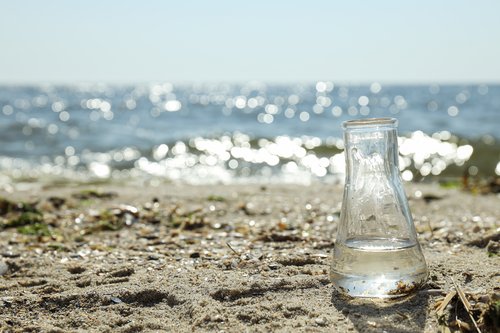
3 min read
The Six Chemical Classes Series
WLLW delves into how to recognize and manage harmful chemicals in domestic products, to create informed, health-conscious homes.

2 min read
WLLW delves into how bisphenols and phthalates pose significant health and environmental risks and how implementing proactive measures is crucial for safeguarding wellbeing and ecological balance.
Bisphenols and phthalates are ubiquitous in homes, from electronics, upholstery, vinyl flooring and kids toys to the pantry cupboards. But what are they? Bisphenols are a group of chemical compounds used in the production of plastics and resins. A common bisphenol is Bisphenol A (BPA), which is used in the manufacturing of products from plastic bottles, food containers, sports equipment to cash register receipts. Phthalates, found in vinyl flooring, vinyl blinds, shower curtains, toys and personal care products, are added to plastics to make them more flexible and resilient. Both chemicals have been topics of research due to concerns about their potential impact on human health.
Even low concentrations of these chemicals can imitate or interfere with hormones, leading to disruption of crucial body systems. Infants and fetuses are particularly vulnerable to these effects, according to some studies. Exposure to Bisphenol A during early life has been correlated with asthma and neurodevelopmental issues such as hyperactivity, anxiety, depression and aggression. In adults, BPA has been linked to conditions like obesity, type 2 diabetes, heart disease, reduced fertility and prostate cancer. Prenatal and early-life exposure to phthalates is associated with asthma and allergies, as well as cognitive and behavioral problems. It may also affect reproductive development in boys. In adult males, phthalates are connected to reduced fertility.
Bisphenols and phthalates pose significant environmental concerns due to their persistence and widespread presence. These chemicals can seep into water sources, contributing to pollution, and their disposal raises issues of soil contamination, which can adversely affect organisms and plants. Additionally, the degradation or incineration of products containing bisphenols and phthalates can release them into the air, impacting air quality. Wildlife is also vulnerable, with aquatic organisms at risk from waterborne contaminants and land animals susceptible to soil or air contamination. These chemicals can also significantly reduce biodiversity within affected ecosystems.
Bisphenols and phthalates can be ingested, inhaled and absorbed through the skin. Bisphenols and phthalates tend to migrate from various products into food, water and dust. The primary mode of human exposure stems from consuming food or beverages stored in (mostly plastic) containers containing these chemicals.
Thankfully, the modern consumer yields more power than ever, and there are several things you can do to reduce exposure to bisphenols and phthalates while also supporting a market shift toward safer and more sustainable alternatives.
In the United States, federal action on bisphenols and phthalates has been limited but there are some key policy measures in place. The Consumer Product Safety Improvement Act (CPSIA) of 2008 sets limits on phthalates in children's products. The Food and Drug Administration (FDA) regulates materials in food packaging, banning BPA in baby bottles and sippy cups. The Environmental Protection Agency (EPA) oversees the Toxic Substances Control Act (TSCA), which has been reformed to enhance chemical safety, allowing the EPA to regulate bisphenols and phthalates. Additionally, some states, such as California, Washington and Vermont, have implemented stricter regulations to address these chemicals in consumer products.
Photography: Travelerium/Adobe

3 min read
WLLW delves into how to recognize and manage harmful chemicals in domestic products, to create informed, health-conscious homes.

2 min read
We explore antimicrobials, taking a closer look at the importance of balancing their protective benefits and the risks of overuse.